In Asturias, cider (or sidra) is a way of life. There are 22 officially designated apple varieties which can be pressed into almost 100 different brands made by small farmers and larger empresas alike. I can’t say I’ve had every one yet, but I have tried a few.* In Ireland, Guinness is a food group; in Asturias, it’s the sidra.
Wherever Asturians gather, you’ll find sidra and sidrerías, from Gijón (the largest city) to Oviedo (the capital) to every town and village along the coast or south to the Picos Europas and the Castilla y León border. Gijón even boasts its own Guinness record for the most people simultaneously pouring cider. By pouring I mean from a height, arm raised high, glass held low to get the best possible agitated froth (aguante). The Asturian cider pour is essential and has its own verb to describe the procedure – escanciado.**
The current record from August, 2013, is 8,061 people, shared by sidra-loving Asturians in their annual group pour on La Playa de Poniente (one of the westernmost beaches of Gijón). In line with Asturian accounting, however, they stop recording newcomers soon after breaking the previous year’s record, so as not to elevate the numbers beyond reach for next year’s pour. It’s a group hug Asturian style. With practice, only about 10% ends up on the floor (or beach).
Of course, Gijón has more to offer than just fabulous apple-fermented juice. There is La Playa de San Lorenzo, one of the longest city beaches on the Spanish north coast with a 5-km walled promenade (el muro) that defines peace and tranquillity in the middle of its 250,000 strong city population. While not ablaze with excessive temperatures as in Spain’s Mediterranean Costa del Sol, San Lorenzo is home to the more refined sun-worshippers, walkers, and surfers alike.***
For the archeologically-minded, there is a Roman wall, Roman baths, thatched Asturian homes, and even a few 20,000 year-old cave drawings, only an hour’s drive up the coast to Llanes. One can also get to Bilbao or Santiago de Compostela easily by car along the Autovia del Cantábrico or as far as Bordeaux or Porto in a day.
Other must-sees include a walk through Cimavilla, the oldest part of town, and then up to Eduardo Chillida’s modernist Eulogy to the Horizon statue (El Cerro) with its sweeping views of the conchal Cantabrican coast. The Universidad Laboral, designed by Luis Moya Blanco, conjures up thoughts of another Spanish Escorial, and is the largest building in Spain by surface area.
To others, the outskirts or afueras is where Asturian charm best lies, in its coastal nooks and crannies, in its pastoral country sides, in its rural villages. But for most, the beauty of Asturias is in its people. You can walk the beaches, see historical sites, but all you have to do is share a sidra with a local and you’ll be hooked.
John K. White is an Irish-born Canadian writer now living in Gijón. He is the author of Do The Math!: On Growth, Greed, and Strategic Thinking (Sage, 2012), The House of Words (Tuttle House, 2013), and Caracolas, a blog about his ongoing adventures in Asturias.

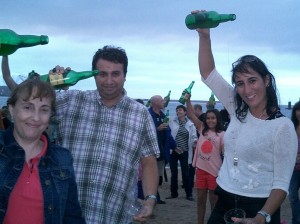
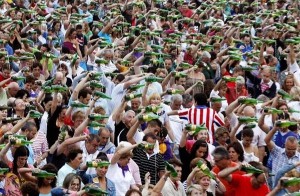
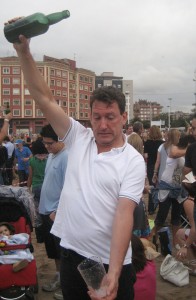
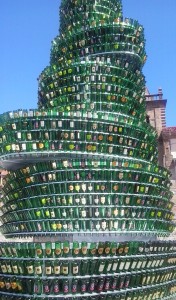
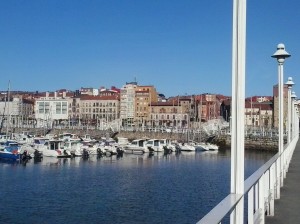



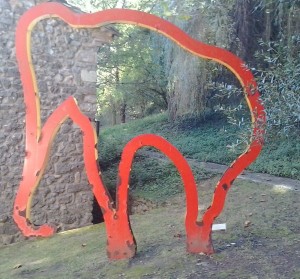

With regards to over-development madness, today’s El Pais notes: “Crisis wipes 80,000 Spanish households off the map,” and “The country has 800,000 unsold properties – Demolishing unfinished buildings might be best the only solution, say experts.” Such is the world of planning and bubble economics. And one can only hope that the “experts” aren’t the same experts from before the crisis.
Lovely article which if you dont mind i will share on fancornio rural as good tourist info.
Keep up the info so more can share the delights of this special land.
Thanks Terri, I enjoyed having to research so much about cider for this week’s caracola, though I think I shall have to revisit the topic again. Ta luego, John
great piece. couldnt agree more with the ending.
im from scotland but i live and work in asturias.
its the people that make it, although the sidra is good too.
Thanks Craig. There is definitely a Celtic feel to the north coast here — the rugged scenery, the misty weather, and the warmest of people. Slanj, John
Just in case you want to know more about the Universidad Laboral:
The Other Modern: An Architecture of Continuity
Hola Antonio, Thanks for the link — lots of great info and amazing pictures about the Univeridad Laboral. I think if it was in the center of Gijón it would be much more well known outside of Asturias. It really is a spectacular site and a hidden gem of architecture in northern Spain. Happily, I can see it out our window everyday. And great for the quiz questions: tallest stone building in Spain, tallest building in Asturias, and largest surface area in Spain, although I’d say the Nuevos Ministerios in Madrid is pretty close. Muchas gracias por tu comentario. Ta luegine, John